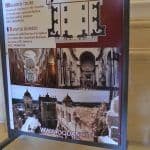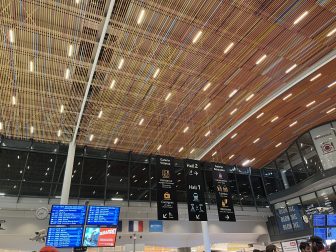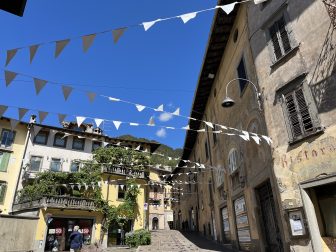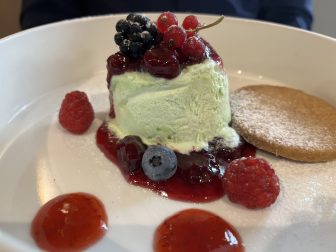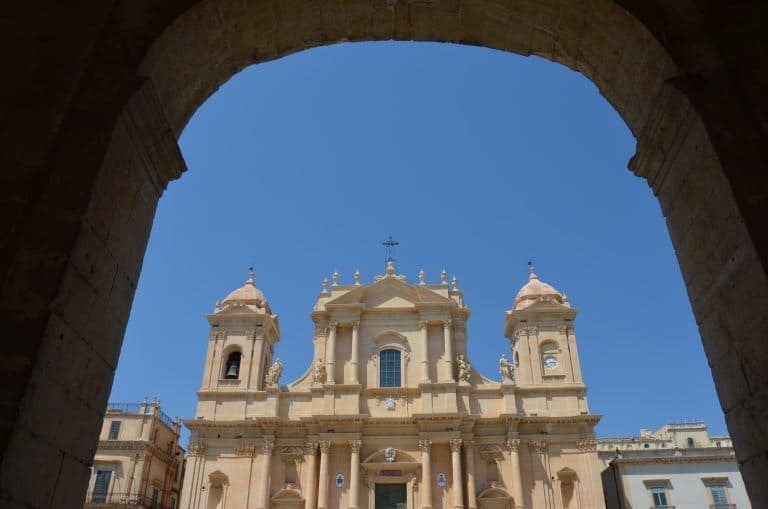
[ July 2017 ] I continue talking about our visit to churches in Noto in the south of Sicily in Italy.
The next place we went was the cathedral, Basilica Cattedrale di San Nicolo.
Although the cathedral is named for San Nicolo, our guide in the church said, “That was named by Normans but actually our saint 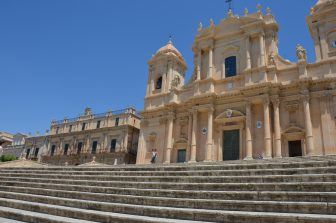 in this city is San Corrado“.
in this city is San Corrado“.
They have a festival carrying the silver coffin of the relic of San Corrado, parading around the town twice a year.
The amazing thing is that 40 strong men run up the big staircase in front of the cathedral with this coffin which weighs 750 kg.
Well, to walk up the stairs slowly with this heavy coffin is more difficult, I suppose.
To be one of the 40 is regarded as the honorable thing and the family members of notables of the city do it from generation to generation.
Carrying a portable shrine in Japan is exactly the same.
Inside the cathedral was unexpectedly simple and there is a reason for that.
This cathedral was built and completed in the second half of the 18th century and inside was originally rather simple in white.
The locals vowed, “If we do not suffer any air raids, we will decorate it beautifully” during the second world war.
So they did.
It looked gorgeous, but they used concrete for the roof and made the pillars hollow, which made the structure of the church weak.
Because of that, during the night of the 13th March in 1996, most of the str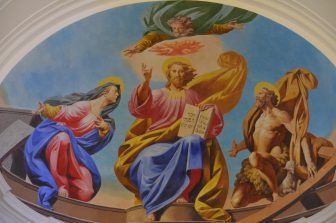
So the current church is new.
After reconstruction, it opened to the public only in 2007.
We saw the photos of the gorgeous interior before collapsing and the site of the disaster.
The new decorations were done by local artists.
Our guide was quite critical about the results, for example, she pointed out a picture above the altar and said “Look at the Virgin 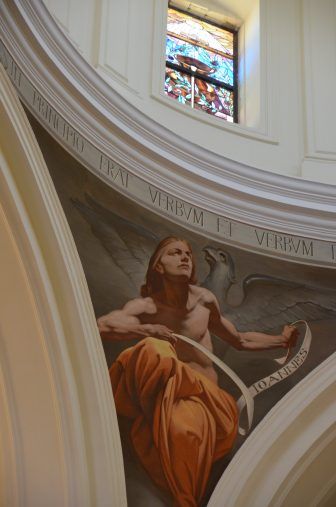
She also said about the picture on the wall below the dome “The painter painted self-portrait there”.
On the other hand, she was proud of the 14 small pictures on the pillars, saying “These are the works of a painter who is regarded as the present-day Caravaggio”.
The building next door was a small museum, exhibiting the old things which survived the earthquake and the collapse.
The museum building itself was donated by an important family of the city when they did not have any successors.

